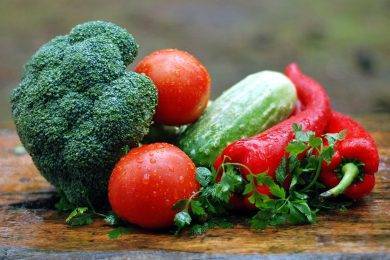Hey, where’d you get that carrot?
No – really. Maybe you bought it at the produce section of the supermarket, or even at a local farmer’s market, but where was it before that? How many food producers touched that single piece of food before you found it in your hands today?
In America, there has been a push toward mindfulness when it comes to the source and treatment of our food. Industrial farming has become more of a long-term science experiment than an Indigenous tradition. With the popularity of land acknowledgments and reparations, do you practice what you preach when it comes to what’s on your plate?
There’s a lot to know about modern food industry producers in the quest for dietary mindfulness. How much do you really know about the journey that your produce takes on its way to the dinner table? Keep reading to learn the story of food consumption in America today.
1. What Is a Producer in a Food Supply Chain?
The first thing to know about the story of our food in America is just who has a hand in the growing and processing. The producer definition in a food supply chain is, essentially, any person or entity who has a hand in creating the food product before it is in the hands of a consumer. It is the very first step in the food supply chain.
Broadly, there are five pieces of the supply chain puzzle. They are:
- Production
- Processing
- Distribution
- Retailing
- Consumption
This supply chain has changed enormously as we have become an industrialized nation and world. The food we eat is rarely grown by local farmers. It’s often grown on distant farms and must travel long distances to make it to the next stage of the process.
The reason you may not know who the food producers are in America is due to the major disconnect between our food and the land. It’s possible for a person living in Iowa to be eating a Columbian-grown avocado in the winter. This would have been impossible as little as one hundred years ago!
That means the average citizen doesn’t recognize the cost of eating foreign-grown, out-of-season food.
2. Food Waste Is a Problem
Imagine yourself carrying an armful of fruit and vegetables from the kitchen to the dining room. Surely you will drop a few things along the way and they will go to waste. That doesn’t even account for food that may have already been moldy, bruised, or wilted before you even picked it up!
Because food has to travel such long distances and changes hands so often, food waste has become a problem in our country. In fact, our food waste costs us an estimated 1.2 trillion dollars per year! That’s a lot of carrots!
3. Indigenous Farmers Like It Natural
We all know that the first farmers in America weren’t settlers, but the country’s Indigenous population. The native population formed a connection with the earth, both as a physical and spiritual practice. The International Indian Treaty Council has made it its mission to support food sovereignty.
Essentially, they believe that every Indigenous citizen has a right to food from the earth. They support returning to their early farming practices, free from all GMOs and pesticides. Their goal is to make food as natural and safe as it was pre-colonization.
It seems like modern farmers have a lot to learn from the example of their Indigenous role models.
4. The Producer-To-Land Ratio Isn’t Even
Believe it or not, small farms make up 72% of all farms! You would think that might mean that the majority of your food comes from small or local farms. In reality, there is a reason why we call them “small farmers.”
In contrast, large farms make up about 1% of the world’s farms. When we say large, we really do mean large. This small percentage takes up 65% of all agricultural land on earth.
This is why, despite the number of small producers hard at work in America, most of your food will be grown on industrial farms – here or elsewhere.
This is a problem for the same reason that 1% of the population holding the majority of the wealth is a problem. There is no incentive to develop technologies that would be practical and effective for these small farmers. They become poorer as the large farmers become richer and soon they may become obsolete.
If small farms become obsolete, so does organic produce. Many crops and heirloom varietals are likely to go extinct as a result.
5. Organic Fertilization Is a Thing of the Past
If you ask an elementary school student how things grow, they may or may not mention the fertilization process. In the past, teachers would have explained that sun, crop rotation, and natural bacteria in the soil were responsible for growth. Today, the fertilization process has become so complicated and fraught that it barely comes up.
That’s because the process shifted drastically when we learned to use naturally-occurring nitrogen to create ammonia. That ammonia is now used in place of organic fertilizers on large farms. This uses an enormous amount of energy and is responsible for a prohibitive amount of carbon emissions each year.
6. It Can Be Toxic
Another side effect of the industrial farming complex was the development of lab-created pesticides. Making and spraying these pesticides is less expensive than using natural measures. This is what allows large producers to sell their produce for a higher profit.
The problem is that many of these pesticides are causing adverse health effects on human beings, including Americans. Scientists have tied these pesticides to everything from an increase in breast cancer to childhood developmental problems.
7. It’s Harming Animals
There has been some evidence that the same pesticides harming humans may be harming our pollinators, who play an essential role in the growth of all plant life on the planet. Without bees, moths, wasps, and butterflies, a great deal of modern plant life is at risk – and so is every animal that depends on that plant life for food or shelter. If man-made pollination becomes necessary, those large farmers will once again have a massive advantage when it comes to production and resources.
Furthermore, all of the land used by those large farmers was once natural. Often, forests and other ecosystems were there first. Producers clear these areas to make space for these massive industrial farms, killing native plants and animals in the process.
8. Producers Could End World Hunger Today
Remember the trillion dollars worth of food waste we discussed earlier? Much of that waste occurs because food must travel long distances to make it to the next step of the supply chain. For example, did you know that producers harvest Ecuadorean bananas a full year before they reach some supermarket shelves?
Many of these farms are in countries where the population is hungry. There are about 800 million people globally who are currently suffering from hunger. If that food didn’t have to travel, it could easily feed the hungry populations where it is being grown right now.
9. It’s Exacerbating Climate Change
Because so much of the food in America has to travel to get to our shelves, systems of infrastructure play a huge role in production. Our food travels aboard ships and planes and on the backs of trucks. Every one of those vehicles requires a significant amount of fuel, leading to massive emissions that have a direct effect on the rapidly changing climate.
By the year 2050, there may be a global population of 10 billion people! That will require more food, not less! If we continue on this path, we’ll experience a major climate emergency sooner rather than later, which can put the entire global population at risk.
10. Radical Change Is Possible!
Food production in America is causing or aggravating many problems that affect everything from health to the environment. Even so, change is possible if America’s producers are willing to entertain the idea of a radical transformation in their methods of operation. This will require a return to natural and organic farming on a smaller, local scale.
The first step is education, and you’re already there. Now that you know how complicated and problematic the American supply chain can be, you can help educate others. If American citizens demand change then policymakers are more likely to do something about it.
Food Producers Keep America Fed
The carrot you have today is a gift from the earth. It’s our job as consumers and as Americans to do what we can to repay the earth for its generosity as the environment continues to struggle under the heavy burden that we’ve placed upon it. If our food producers move toward more sustainable practices, then we won’t have to teach our grandchildren about carrots from a book!
It’s not too late to keep learning and make a difference! Check out the rest of the blog for more illuminating posts that might change your mind and heart!











